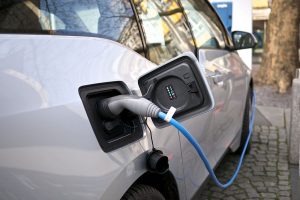Note: This op-ed originally appeared in the Daily Californian on July 14, 2021: https://www.dailycal.org/2021/07/14/lets-make-clean-transportation-accessible-for-all-californians/
Low-income communities of color suffer the most from air pollution, climate change and inadequate transportation choices. These communities with the greatest need have been last in line to receive the benefits of clean mobility. That’s why the Coalition for Clean Air and our allies in the Charge Ahead California campaign are seeking to prioritize transportation equity as the state makes the transition to zero-emission vehicles.
Air monitoring shows that more than 90% of Californians breathe unhealthy levels of at least one air pollutant during some part of the year. But this health-damaging pollution is not distributed equally.
The Union of Concerned Scientists found that, on average, African American and Latino Californians are exposed to dangerous soot pollution at levels that are 43% and 39% higher than those experienced by white Californians, respectively. This soot pollution, much of which comes from burning petroleum fuels in vehicles, poses a serious threat to human health, causing heart and lung disease, as well as premature death.
We will never resolve the twin crises of air pollution and catastrophic climate change unless we democratize transportation, which is the biggest source of the emissions driving these crises. That means providing clean mobility to all — not just those who can afford the latest technology.
The Charge Ahead California Initiative, which we co-sponsored in 2014, has resulted in several successful transportation equity projects funded by the California Air Resources Board through proceeds from the auctions of carbon allowances to large polluters. That means that money paid by companies like Chevron and Tesoro goes to provide clean transportation to people in underserved cities such as Richmond and Stockton.
For example, the state’s Clean Cars 4 All program offers low-income drivers in state-designated disadvantaged communities up to $9,500 to replace their older, high-polluting cars with used plug-in vehicles, which are generally available for about $13,500. A recent study by UCLA’s Luskin Center for Innovation found that Clean Cars 4 All had successfully replaced more than 11,000 high-polluting vehicles with advanced clean cars. The report urges state policymakers to provide more certainty on the timing and extent of funding and to institute additional evidence-based targets for achieving distributive equity.
Another state-funded project, Clean Mobility Options, funds many transportation choices that do not rely on vehicle ownership, including innovative transit services such as on-demand shuttles and microtransit and electric vehicle car-sharing, bike-sharing, carpooling and vanpooling. Furthermore, the Clean Vehicle Assistance Program, or CVAP, offers lower-income Californians a low-interest loan and a vehicle price buy-down to purchase a new or used electric, hybrid or plug-in hybrid vehicle. All of these programs are so popular that they have run out of funds in the past, and CVAP is currently closed to applications.
This year, Gov. Gavin Newsom saw an opportunity to use some of the state’s record surplus to advance the goal of zero-emission transportation, and he rightfully prioritized equity projects such as Clean Cars 4 All in his budget proposal, along with major investments to clean up the trucks and buses that spew diesel exhaust in our communities. Unfortunately, the state Legislature, while making laudable investments in clean transportation, revised the budget to favor subsidies for wealthier Californians.
The budget bill that was signed into law Monday allocates $525 million to the Clean Vehicle Rebate Project, or CVRP, which is available to households making up to $300,000 a year. However, the budget funds all of the transportation equity projects at only $150 million for this year.
Budgeteers say they expect to spend another $250 million on the equity projects over the next three years, but that promise is dependent on future budget action. CVRP, on the other hand, gets all $525 million upfront.
This is a textbook example of inequity. In response to the budget, Roman Partida-Lopez of the Greenlining Institute said programs such as Clean Cars 4 All “have been underfunded for years, even when we’ve seen these programs go dark because of increased demand and participation. … We look forward to seeing equity in practice, and not just as another talking point.”
Indeed, equity in transportation means that all of our residents should have access to not only the cleanest vehicles — those that do not have tailpipe emissions because they are powered by batteries or fuel cells — but also to the charging and fueling stations that enable the use of those vehicles. In future budgets, the Legislature should focus its clean transportation funding on low-income communities of color by fully funding popular transportation equity projects.
There are several steps, however, that policymakers can take during the next few months. Lawmakers should pass — and Newsom should sign — SB 726 and AB 1389, both of which would assure that disadvantaged and low-income communities benefit from the infrastructure that supports zero-emission vehicles. The Air Resources Board should prioritize low- and moderate-income drivers for vehicle rebates, as well as restrict eligibility so that those more affluent drivers who will be buying new electric cars anyway are not receiving state subsidies that are needed by the less affluent. Clean mobility should be for everyone.








